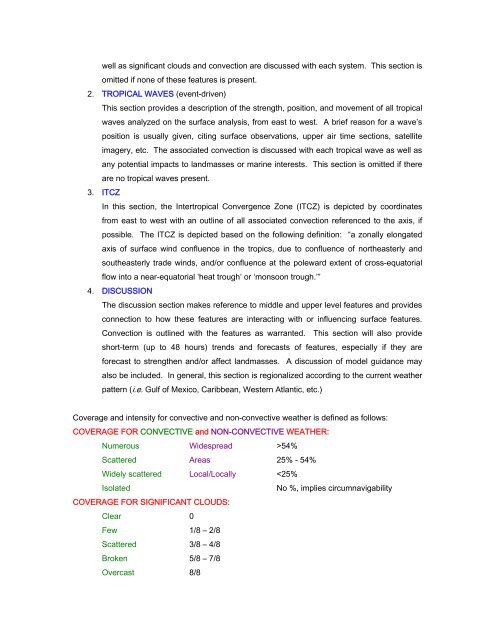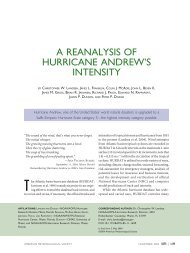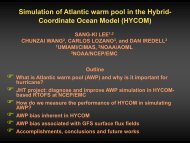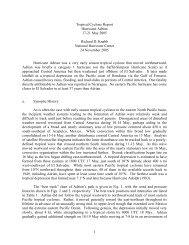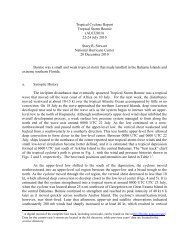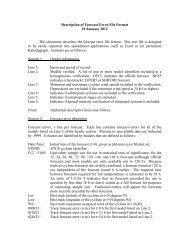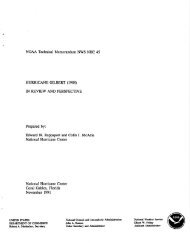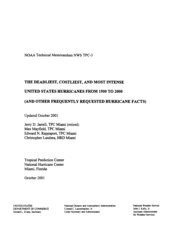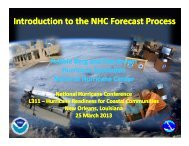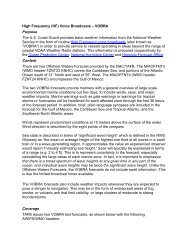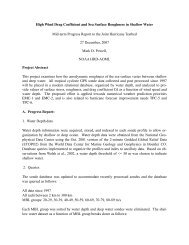tropical weather discussion - National Hurricane Center - NOAA
tropical weather discussion - National Hurricane Center - NOAA
tropical weather discussion - National Hurricane Center - NOAA
Create successful ePaper yourself
Turn your PDF publications into a flip-book with our unique Google optimized e-Paper software.
well as significant clouds and convection are discussed with each system. This section is<br />
omitted if none of these features is present.<br />
2. TROPICAL WAVES (event-driven)<br />
This section provides a description of the strength, position, and movement of all <strong>tropical</strong><br />
waves analyzed on the surface analysis, from east to west. A brief reason for a wave’s<br />
position is usually given, citing surface observations, upper air time sections, satellite<br />
imagery, etc. The associated convection is discussed with each <strong>tropical</strong> wave as well as<br />
any potential impacts to landmasses or marine interests. This section is omitted if there<br />
are no <strong>tropical</strong> waves present.<br />
3. ITCZ<br />
In this section, the Inter<strong>tropical</strong> Convergence Zone (ITCZ) is depicted by coordinates<br />
from east to west with an outline of all associated convection referenced to the axis, if<br />
possible. The ITCZ is depicted based on the following definition: “a zonally elongated<br />
axis of surface wind confluence in the tropics, due to confluence of northeasterly and<br />
southeasterly trade winds, and/or confluence at the poleward extent of cross-equatorial<br />
flow into a near-equatorial ‘heat trough’ or ‘monsoon trough.’”<br />
4. DISCUSSION<br />
The <strong>discussion</strong> section makes reference to middle and upper level features and provides<br />
connection to how these features are interacting with or influencing surface features.<br />
Convection is outlined with the features as warranted. This section will also provide<br />
short-term (up to 48 hours) trends and forecasts of features, especially if they are<br />
forecast to strengthen and/or affect landmasses. A <strong>discussion</strong> of model guidance may<br />
also be included. In general, this section is regionalized according to the current <strong>weather</strong><br />
pattern (i.e. Gulf of Mexico, Caribbean, Western Atlantic, etc.)<br />
Coverage and intensity for convective and non-convective <strong>weather</strong> is defined as follows:<br />
COVERAGE FOR CONVECTIVE and NON-CONVECTIVE WEATHER:<br />
Numerous Widespread >54%<br />
Scattered Areas 25% - 54%<br />
Widely scattered Local/Locally


